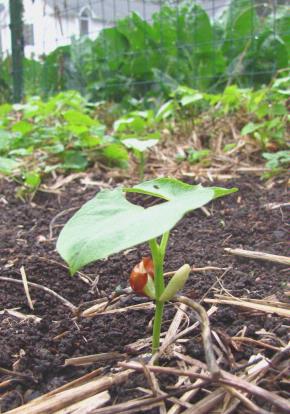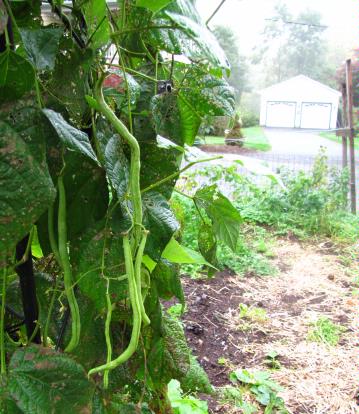We all need the most abundant element in the atmosphere, nitrogen. DNA and protein are both chock-a-block with nitrogen. But atmospheric nitrogen, N2, is entirely unusable by multicellular organisms. Animals get their nitrogen from plants (by eating plants or another animal that eats plants). These plants take nitrogen up from the soil, or if they’re lucky they make a deal with some bacteria. Before the last century, critters relied on soil-bacteria to get that atmospheric N2 into usable form; they “fix” nitrogen. When plants and animals rot other bacteria put the nitrogen back into the atmosphere: gentle readers, the nitrogen cycle.
It takes a lot of nitrogen to grow healthy plants and people. A poorly fertilized field is immediately recognizable as the crops aren’t very green. Children develop kwashiorkor.
We didn’t always have to worry about nitrogen. Foragers didn’t care how plants made fruit, they just gathered. But as soon as people began to grow food in certain spots intentionally, they started to have plant nutrition problems at first they just moved to fresh land.
Once populations started to become dense farmers couldn’t just move: they had to fertilize. Even on a diversified farm with livestock, forage and crop plants, farmers can’t escape a net loss of nutrients; when livestock or produce leaves the farm it takes nutrients with it. Manure is great fertilizer, but the cows aren’t making the nitrogen and other nutrients, they’re just mining the plants, who are mining what the bacteria put in the soil. This meant that another farm had a net outflow of nutrients. For thousands of years the nitrogen came from bacteria, by way of plants and animals. The rate of the cycle kept a bit of a lid on things.

Beginning in 1909 two German scientists, Haber and Bosch figured out how to convert atmospheric N2 into ammonia. The process uses lots of fossil fuels, but meant we had a seemingly unlimited supply of nitrogen. Our population has exploded in part because of fertilizer, which relies on cheap energy. There are some downsides to circumventing the nitrogen cycle. We’re putting too much water soluble nitrogen into the soil. Instead of getting recycled into the atmosphere as it is lost from dead organisms, it winds up in lakes and rivers feeding algal blooms. It gets into our groundwater and can lead to blue baby syndrome.
Gardeners who wish to avoid manufactured fertilizers can use manure, compost or blood meal as I do. Unfortunately, a lot of the nitrogen comes from the same places. Cow manure from cows fed on fertilized forage means the nitrogen comes from the Haber-Bosch process. The only real alternative is to get back to the bacteria. Legumes form symbiotic relationships with bacteria in the soil that incorporate “fix” nitrogen from the atmosphere. This works well and uses no fossil fuels, but it takes a lot of legumes.

One of the biggest challenges that will face any sustainable version of agriculture will be providing enough nitrogen to sustain our population. A big part of that is going to be the use of green manures: legume crops planted in rotation to ensure ample nutrients for our food. This year I’m relying on the tried and true compost. Next year I’m trying hairy vetch again. It adds lots of nitrogen and the boss says it sounds like a surly uncle.


